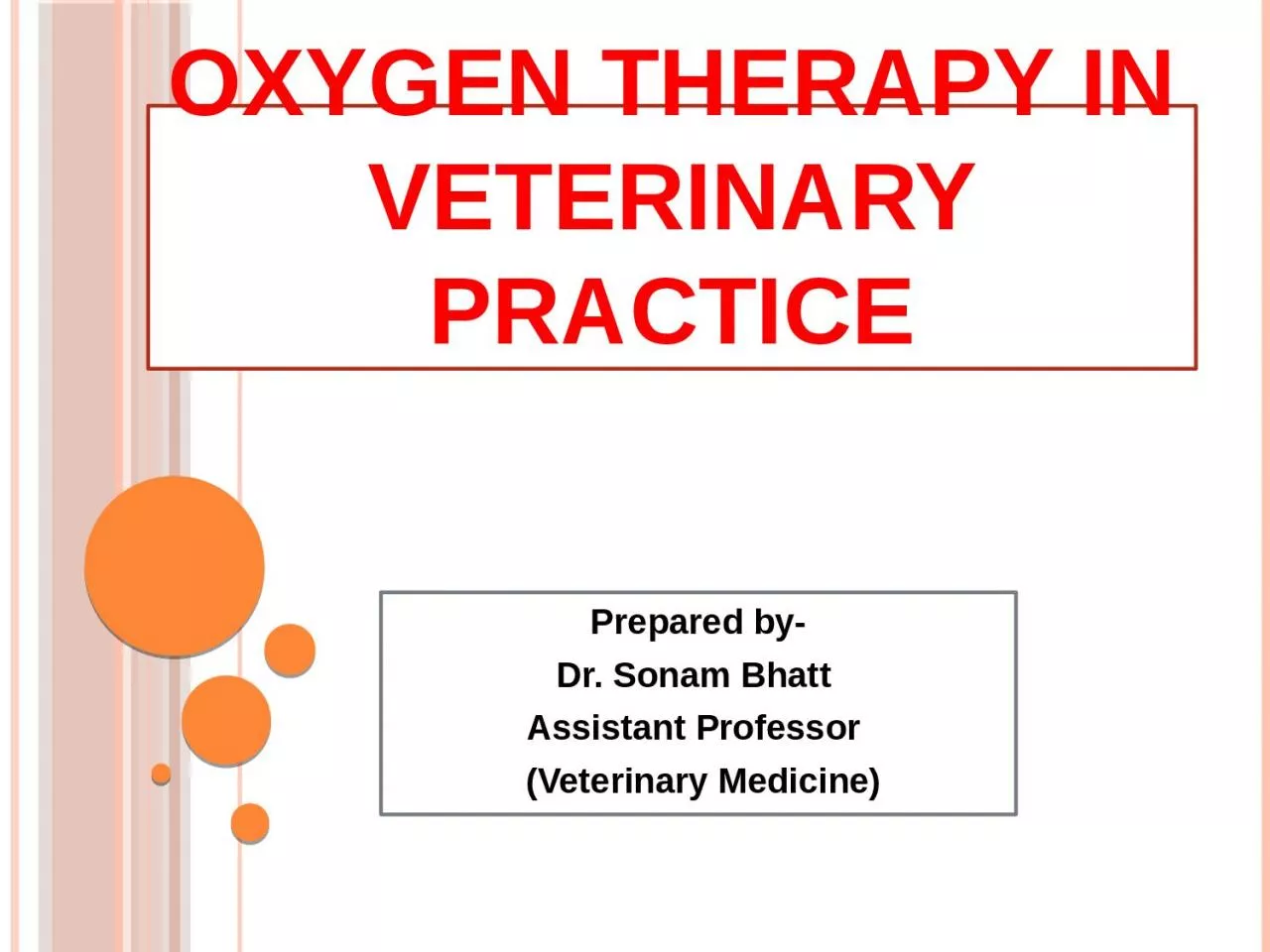

Prepared by Dr Sonam Bhatt Assistant Professor Veterinary Medicine Introduction It is widely used in veterinary medicine Most important veterinary cares in emergency health Used to relieve hypoxia and increase oxygen delivery to the tissues ID: 1010676
Download Presentation The PPT/PDF document "Oxygen Therapy in Veterinary Practice" is the property of its rightful owner. Permission is granted to download and print the materials on this web site for personal, non-commercial use only, and to display it on your personal computer provided you do not modify the materials and that you retain all copyright notices contained in the materials. By downloading content from our website, you accept the terms of this agreement.
1. Oxygen Therapy in Veterinary PracticePrepared by-Dr. Sonam Bhatt Assistant Professor (Veterinary Medicine)
2. Introduction It is widely used in veterinary medicineMost important veterinary cares in emergency health Used to relieve hypoxia and increase oxygen delivery to the tissues. In the emergency room setting, patients presenting with symptoms of respiratory distress may benefit from oxygen supplementation until the status of their respiratory system can be determined.
3. Oxygen therapy denotes the delivery of high concentrations of oxygen into the respiratory system to increase the oxygen levels in the blood so that more oxygen reaches at tissues level Oxygen therapy increases the fraction of inspired oxygen (FiO2) delivered to the alveoli
4. Indications of Oxygen Therapy Hypoxia Hypoxaemia
5. When to Institute Oxygen Supplementation Clinical signs: nasal flaring, pallor of mucus membrane, cyanosis, panting, irregular chest wall movements etc., require immediate supplementation of oxygen Quantitatively, oxygen should be provided to any patient with saturation of oxygen (SaO2) or pulse oximetry reading (SpO2) of <93% or with an arterial partial pressure of oxygen (PaO2) of <80 mm Hg.
6. Methods of Oxygen Therapy Non-invasive Method Invasive Method
7. Non-Invasive Methods of Oxygen Therapy This method is readily available in most emergency clinics. Administration of ventilator support without using an invasive artificial airway (endotracheal tube or tracheostomy tube).
8. Non-Invasive Methods of Oxygen Therapy Flow-by oxygen: Delivered via a tube placed in the vicinity of the patient’s nose or mouthFace mask: A face mask can be attached to an oxygen source for delivery of higher FiO2 compared to flow-by oxygenOxygen hood/oxygen collar: An oxygen hood can be constructed using an Elizabethan collar and covering the opening 75–90% with clear plastic wrapOxygen cage: stress-free method of oxygen supplementation.
9. Flow-by oxygen: Face mask Oxygen hood/collar
10. Oxygen cage
11. Possible when the animal is unconscious or under anaesthesiaIt includes – Nasal oxygen prongs: are widely used in human medicine Nasal oxygen catheters: best method among all the invasive method as it is inexpensive, technically easy to place and also well tolerated by the patient. Oxygen catheters are available in various diameters and lengthsInvasive Methods of Oxygen Therapy
12. Trans-tracheal oxygenation: This technique is used in patients intolerant to nasal oxygen delivery like patients suffering from upper airway obstruction
13. Nasal oxygen prongsNasal oxygen catheters
14. Trans-tracheal oxygenation
15.